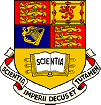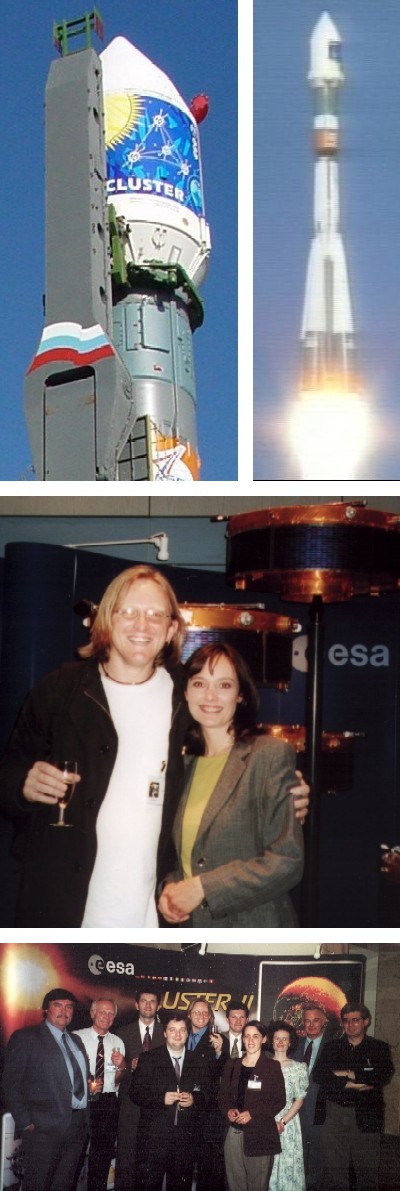
 |
|
News Page |

August 2000 |
This month's news story:Second Cluster launch |
 Cluster: ...and then there were FOUR !
Cluster: ...and then there were FOUR !Following the successful launch of the first two Cluster spacecraft (SC2 and SC3) on 16 July, and the manoeuvers to place them into their operational orbit, the second pair (SC1 and SC4) was successfully launched on 9 August, again from Baikonur, Kazakhstan, on the Russian Soyuz-Fregat launcher. According to the latest news, the second pair of spacecraft have now successfully joined the first two in the planned constellation. A few more activities related to getting the spacecraft ready for scientific operations, such as opening the magnetometer booms are still necessary. But then, between 22 and 24 August, the FGM team will switch on and check out the four instruments in space from the European Space Control Centre (ESOC) in Darmstadt, Germany.
A launch event, with live relay of the second launch, was organised in the Royal Society by ESA and PPARC. This event was attended by the FGM team from Imperial College (André and Sue Balogh, Chris Carr, Peter Cargill, Malcolm Dunlop, Trevor Beek, Elizabeth Lucek, Patrick Brown, Julian Harris and Tim Oddy). We also appreciated the presence of Prof. John Pendry, Head of our Physics Department at this important event for our group.
We were pleased that Prof. Jim Dungey, lately from Imperial College, and his wife Christine, had been able to accept the invitation to attend the launch event. After all, Jim had made the first suggestion to the European Space Research Organisation, the predecessor of ESA, in the 1960s, to fly a spacecraft quartet to test his open magnetosphere model. Even though he had called it a Bunch, his idea was the true forerunner of the Cluster mission. We shall now get the opportunity to carry out Jim Dungey's original objectives.
The two launch events, the first in the European Space Operations Centre in Darmstadt, the second in London, were appropriate occasions to celebrate these important milestones for our mission, and to dispel the memory of June 1996, when the first four Cluster spacecraft were destroyed in the unfortunate Ariane 5 explosion. The FGM team is now poised for operating and exploiting what promises to be the biggest ever scientific harvest in the magnetosphere.
There are frequent updates on the progress of the Cluster mission on ESA's website: ESA Cluster. Further information on the FGM experiment can be found on the Imperial College Cluster pages.
Above left: The first two Cluster spacecraft under the protective fairing of the Soyuz-Fregat rocket, awaiting the launch. Above right: We have lift-off! Centre: The spirit of rejoicing after the first launch is successfully captured by Julian Harris' smile, in the company of Katie Hazwell who presented the TV programme of the Cluster launch from the Darmstadt Operations Centre. Below: The FGM team at the Royal Society at the second launch event.
André Balogh 14th August 2000
View Last month's news, older news or return to Space and Atmospheric Physics home page